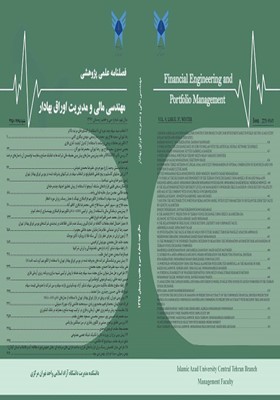طراحی مدل تخصیص ریسک برای قراردادهای طرح و ساخت دارایی های سرمایه ای بخش عمومی ( مورد مطالعه: آب و فاضلاب استان گیلان)
محورهای موضوعی : مهندسی مالیبهمن رسولی 1 , سینا خردیار 2 * , بهمن بنی مهد 3
1 - دانشجوی دکتری، گروه حسابداری، واحد رشت، دانشگاه آزاد اسلامی، رشت، ایران
2 - استادیار، گروه حسابداری، واحد رشت، دانشگاه آزاد اسلامی، رشت، ایران
3 - دانشیار، گروه حسابداری، واحد کرج، دانشگاه آزاد اسلامی، کرج، ایران
کلید واژه: گیلان, مدل تخصیص ریسک, شیوه دلفی, قراردادهای طرح وساخت,
چکیده مقاله :
قراردادهای طرح و ساخت به خاطر پیچیدگی و ریسک، زمان و هزینه اجرای طرح را تحت تاثیر قرار می دهند. طبق ماده 23 قانون برنامه و بودجه مصوب 1352، مدل مناسبی برای تخصیص ریسک وجود ندارد. این پژوهش تلاشی برای پیشنهاد مدل تخصیص ریسک برمبنای یک ساز و کار ساده برای تخصیص ریسک های حیاتی به بخش های پروژه جهت محاسبه بهای تمام شده قراردادهای طرح و ساخت می باشد. به علاوه، این مدل امکان مقایسه پروژه ها را برای شناسایی پروژه های ریسک دار فراهم می کند. ساختار مدل برمبنای شیوه دلفی برای 41 ریسک در 10 گروه می باشد. همه عوامل بوسیله اهمیت وزنی ریسک ها، که ترکیبی از احتمال ریسک و تاثیر زمان و هزینه برآن بود، تحلیل وزنی شدند. نتایج مدل، مهمترین عوامل برای تخصیص ریسک و اقدام مناسب کارفرما، پیمانکار و طرفین را تبیین نمود. مدل برای داده های واقعی در دو پروژه به روش مطالعه موردی برای اعتباردهی بکار گرفته شد. نتایج تاکید داشت فهم و بکارگیری این مدل برای پروژه ها آسان و از قابلیت انعطاف برای متغیر های موجود برخوردار است.
Construction projects in Guilan Water and sewerage has high levels of risk due to their complex and dynamic environment. There are no suitable risk allocation models for Guilan construction industry based on article 23 processing budget and planning law 1352 clause about (EPC).There is the cost of project and plan for design risk allocation model. This work endeavors to propose and apply a Risk Allocation Model (RAM), based on a simple mechanism for allocating critical risks to the responsible party in the project. In addition, the RAM aims to compare among projects, which is more risky. The construction of RAM is based on Delphi method for 41 risk factors, over 10 groups, are identified and used in the model development. All factors are analyzed and weighted by deploying Weighted Risk Factor (WRF) which combines the effect of a risk factor probability and its effect on time and cost. The model results identified the most important risk factors to be allocated to owner, contractor or shared between them, as well as the suitable risk action for each factor. The model is applied on a real case study through two construction projects in Guilan to test the validation. A complete comparison between the two projects is presented and a decision is introduced for contractor. The results emphasized that the model is easy to understand and use by the parties involved in construction projects. Further, it is flexibility in the event of variables.
_||_

